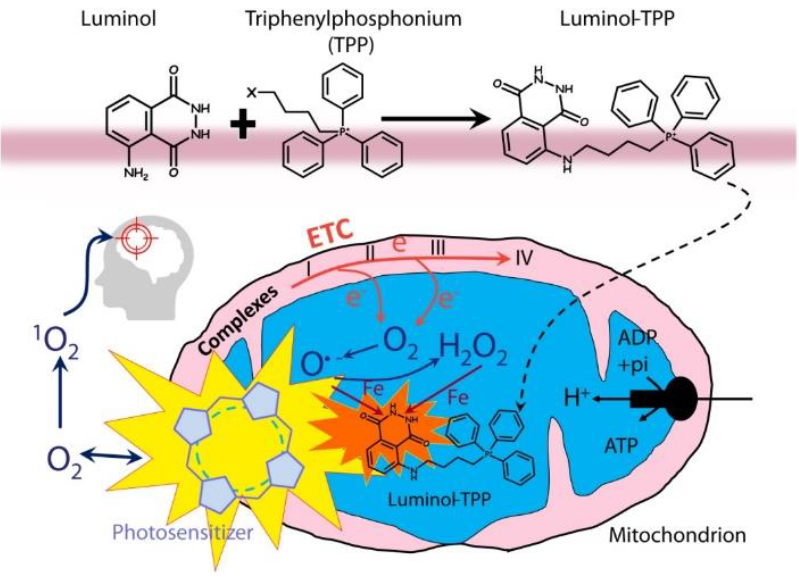
Figure 1: Lumiblast™ is photodynamic therapy (PDT) without the need for an external light source! Light generated by our proprietary luminescent compounds (luminol used as an example) in response to intracellularly generated oxygen radicals activates cytotoxic photosensitizers like 5-ALA to damage DNA and initiate tumor cell killing.
A paradigm shift in cancer therapy – using mitochondria-powered chemiluminescence to non-invasively treat inaccessible tumors
Background
Glioblastoma is an aggressive brain cancer and one example of deep-lying tumors that are difficult to access and treat with current therapies. As the most common malignant brain tumor it accounts for about 15% of all primary brain and central nervous system neoplasias, affecting about 250,000 people globally every year.1
Glioblastoma is incurable, with current standards of care consisting of surgery followed by radiotherapy and chemotherapy. This offers only limited benefit to the patients, at considerable detriment to their quality of life. The relative survival rate for patients diagnosed with glioblastoma is about 6% within 5 years from diagnosis.2
With funding from EU’s highly competitive FET Open program, we developed a set of candidate luminescent compounds and obtained proof of concept in vivo in a murine xenograft model. Our Lumiblast™ technology is supported by two patent applications. Next steps include generating a formulation suitable for systemic administration and additional efficacy studies in an orthotopic mouse model.
Technology
- Photodynamic therapy (PDT) using chemiluminescent compounds modified to accumulate in cell mitochondria or the endoplasmic reticulum (ER).
- The compounds provide a reactive oxygen species (ROS)-driven intracellular source of light, for activating photosensitizers (like PpIX or cercosporin), obliging the cancer cells to commit suicide.
- Successful compounds will reach tumors in the brain, and serve to remove cancer cells selectively, without the need for surgery.
Value Proposition
- Improving the life expectancy and survival of patients with GBM as well as other difficult-to-treat cancers.
- Reducing or alleviating the need for surgical intervention.
Intellectual Property
Two pending patent families:
- WO2019243757 (national applications in US, EP, JP, CA, AU, IN)
- WO2023041938 (PCT stage)
References
- Thakkar, J. P. et al. Cancer Epidemiol Biomarkers Prev 23, 1985-1996 (2014)
- Ostrom, Q. T. et al. Neurooncol Pract 7, 306-312 (2020)



